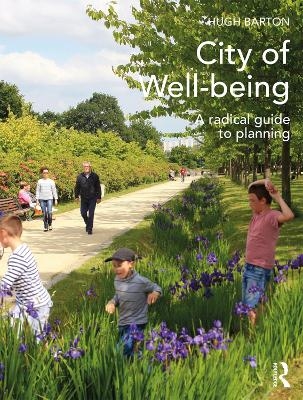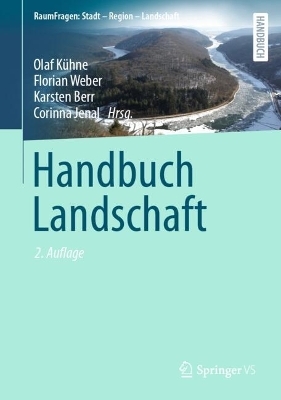
City of Well-being
Routledge (Verlag)
978-0-415-63932-3 (ISBN)
City of Well-being provides a radical and holistic introduction to the science and art of town planning. It starts from the premise that the purpose of planning is the health, well-being and sustainable quality of life of people. Drawing on current and historic examples it offers inspiration, information and an integrated perspective which challenges all professions and decision-makers that affect the urban environment. It is both authoritative and readable, designed for students, practitioners, politicians and civil society.
The science. Summarizing the most recent research, the book demonstrates the interrelationships between the huge issues of obesity, unhealthy lifestyles, inequality, mental illness, climate change and environmental quality. The radical implications for transport, housing, economic, social and energy policies are spelt out.
The art and politics. The book examines how economic development really happens, and how spatial decisions reinforce or undermine good intentions. It searches for the creative strategies, urban forms and neighbourhood designs that can marry the ideal with the real. The relationship of planning and politics is tackled head-on, leading to conclusions about the role of planners, communities and development agencies in a pluralistic society. Healthy planning principles could provide a powerful logical motivation for all practitioners.
Hugh Barton is Emeritus Professor of planning, health and sustainability at the University of the West of England, and the author or editor of a series of innovative books including Sustainable Communities and Healthy Urban Planning (both 2000), Shaping Neighbourhoods (2010), and The Routledge Handbook of Planning for Health and Well-Being (2015). He is a recognized international expert, acting as special advisor to the World Health Organization Healthy Cities movement. A town planner by training, he has spent most of his career teaching planning, urban design and sustainable development at the University of the West of England, Bristol. His research and consultancy has focused on low carbon urban form, inclusive appraisal processes, and the integration of health and well-being into planning. Since ‘retirement’ in 2012 he has continued writing, and participating in academic and professional engagements, while devoting time to community activism, music-making, tennis and a growing number of grandchildren.
Contents
List of Figures
Preface
Acknowledgements
I Orientation
Prologue: contrasting city scenarios
1. Putting people at the heart of planning
Introduction: the purpose of planning
Time-bombs of health, climate and urbanization
Planning at the cross-roads
Reflection
2. A framework for understanding
Towards an eco-system model of cities
The settlement health map
Interpretation of the health map
Conclusion: ethics for planners
II Inspiration
3. Shafts of light from the past
Classical designers and the city of Priene
The Mediaeval city: Siena
Grand designs: Paris re-imagined
Ethical entrepreneurs and Saltaire
4. The emergence of modern planning
The public health revolution
Ebenezer Howard and Garden Cities
The pioneers in Britain and America
Planning as civic design
The British new towns
Gaining the country but losing the plot
5. Beacons of hope
Introduction: Healthy Cities
Copenhagen: city of cyclists
Kuopio: city of lakes and forests
Freiburg: city of short distances
Portland: breaking the neo-liberal taboo
Lessons from inspirational cities
III Cognition: understanding people and environment
6. Spatial planning for physical well-being
Obesity, health and physical activity
Active travel – walking and cycling
Active recreation
Healthy diet
Cautions and counsels
7. Planning for mental and social well-being
Nature, greenspace, sun and sound
Social networks and community
Healthy, diverse neighbourhoods
Social capital and empowerment
Spatial planning recommendations
8. Planning for place equity
Social justice and health inequalities
Planning for all
Work, income and spatial policy
Housing and living conditions
Movement and accessibility
9. Climate change and settlement planning
The science of climate change
Greenhouse gases, energy and planning
Sustainable energy strategy
Human ecology
10. The local ecology of cities
Ecological resilience
Green infrastructure
Air quality and planning
Sustainable urban water systems
Biodiversity
Local food production
IV Navigation: a route map for healthy planning
Criteria for judging healthy urban policy
11. Reality check: the economics of land and development
The life-cycle of a plot
Players in the development game
Land and housing markets
How land values shape the city
Urban renewal and managing the market
12. Sustainable urban form
Understanding urban form
Centrifugal and centripetal forces
Decentralization versus the compact city
Polycentricity and linearity
Five key urban form decision areas
13. Healthy neighbourhood design
Introduction: the significance of locality
The shape of neighbourhoods
Spatial analysis and density
The quality of place
Conclusion: urban design
14. Urban dynamics
Introduction: strategic planning issues
Understanding the economic base of a city
Population and housing
Matching economic activity and population
Transport infrastructure and economic development
V. Perspiration: land, power and the planning process
14. The governance of land
Is planning really necessary?
Private and community property rights
Comparative planning systems
Local government powers
Conclusion
16. The planning process and the role of planners
Dimensions of planning: technical, political and executive
From design to the rational planning process
Heroic versus humdrum planning
The medium is the message: collaborative planning
Testing theory against practice
Ethical planning
17. Putting principle into practice
Making decisions in a pluralist society: engaging communities
A cyclic planning process
Case study: Stroud town centre Neighbourhood Plan
Converting healthy rhetoric into healthy decisions
Conclusion
Epilogue
Seven conclusions if we are serious about planning cities for well-being
Final thought
Index
| Zusatzinfo | 1 Tables, black and white; 100 Line drawings, color; 34 Halftones, color |
|---|---|
| Verlagsort | London |
| Sprache | englisch |
| Maße | 189 x 246 mm |
| Gewicht | 1000 g |
| Themenwelt | Naturwissenschaften ► Geowissenschaften ► Geografie / Kartografie |
| Sozialwissenschaften ► Soziologie | |
| Technik ► Architektur | |
| ISBN-10 | 0-415-63932-8 / 0415639328 |
| ISBN-13 | 978-0-415-63932-3 / 9780415639323 |
| Zustand | Neuware |
| Haben Sie eine Frage zum Produkt? |
aus dem Bereich


